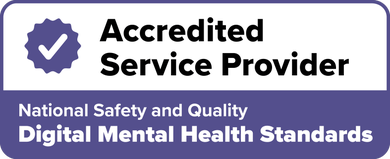10 Tips For Telehealth Therapy
Got a busy schedule? Or prefer the idea of therapy from home? Telehealth is a great option. Telehealth therapy has become more widely available as a result of COVID-19. Many more health professionals are offering online services as the latest research shows its effectiveness.
What does this mean for you? It means no commute, flicking through waiting room magazines, and the comfort of your own home. But to get the most out of your session, there are a few things to consider. Here are our top 10 tips for telehealth therapy.
1. Choose the Right Time
One of the biggest advantages of telehealth therapy is the ability for you to find a time that suits you. Thanks to technology, you have wide access to a range of therapists. This means more appointment availability.
Pick a time for your appointment where you’ll be most likely to be able to focus and work effectively. Tired after work? Choose a time where you will have the energy to go to therapy. Looking after the kids? Find a time where someone is able to assist you with your responsibilities for the session.
Prioritising your mental health is important. It doesn’t matter when you have your therapy, so long as the time works for you and your therapist. Make the time to get the help you need.
2. Decide What Type of Telehealth Session
Everyone’s preferences are different. Therapists have adapted and now offer a range of different styles of online sessions. Consider what will work best for your needs.
Feel self-conscious about appearing on video calls? That doesn’t mean you can’t have telehealth therapy. Some therapists offer counselling via text or phone call. You don’t have to appear on the screen. Many video call programs also have the option to have your screen switched off.
Live with people you don’t want to know you’re having therapy? Exploring text therapy options may be the solution you've been looking for.
Video call telehealth resembles the therapy face-to-face format many of us are familiar with. But there are still plenty of options available for remote therapy that don’t make use of video.
3. Ensure Your Internet Connection Is Stable
Therapy can feel stressful at times. Especially if you’re discussing emotionally charged topics. You don’t need the stress of your signal dropping out to make things worse. Before your session, check that your connection is stable and your device has a full charge. We have prepared a support article on how to connect to your session.
Is internet connection an issue where you live? There are a few things you can try if this is the case.
Try turning it off and on again. This is more than a line from the TV show The IT Crowd, it really can help. Restart your computer, phone or modem. Ask if others in the home are having problems with the internet. If they aren’t, it may mean there’s a problem with your device, so you may need to use a different computer or phone for your session.
Too far from your WiFi. Sometimes, if you’re too far away from your signal, your device may struggle to connect to WiFi. Make sure that you’re able to be close to your modem for your session if you’re worried about the Internet being patchy.
Bandwidth troubles. Streaming video, music or other internet activities taking place in your home may mean your internet is being spread too thin between all the devices in the home. It’s a good idea to make sure streaming services are switched off, for the duration of your session. Ask family members to help you out with this, and check that you’re not streaming something in the background by accident.
Consider asking a trusted friend or family member if you can visit their home for your session. Sometimes our internet just may not be reliable. If that’s the case, consider visiting somewhere where you’ll be able to connect to the internet more easily for your session.
Have a practice run. Don’t video call often? Save yourself stress. Before your session, have a practice run with a friend or family member. This will allow you to troubleshoot any problems your internet might have.
4. Equipment at the Ready
When setting up your device for your telehealth, it’s a good idea to ensure it has a full charge.
Having a telehealth therapy session that uses video? it’s best to position this somewhere stable at eye level. Holding the device in your hands or lap can lead to shifting camera angles which can get distracting. Plus, your arm will get tired holding the phone up for 50 minutes. Instead, use books, blu-tack, desk or tripod to hold the device steady.
Use the self-view to check that the lighting and position are best for your therapist to see you. Mimicking face-to-face session connection is the goal, and a well set up device will help with this.
Feel nervous about the technology working? Consider having a practice run. Ask a friend or family member to video call you so you can familiarise yourself with the program. You don't want to waste the first 10 minutes of your session fussing with technology.
While you’re setting up, consider what you usually have access to in a therapy session. Before you begin, get yourself some tissues and a glass of water.
5. Privacy
Often in therapy, we discuss topics that can make us feel vulnerable. Choose a location for your session that is private for the most comfortable session.
This may mean having your session in a different room to the rest of your household. Or using headphones and placing a draft stopper beneath your door. Or a combination of those things.
Wherever you choose, make sure it’s somewhere comfortable and quiet, where you feel safe.
It's also important to choose a video service that is secure and and has strict privacy rules. At Talked we ensure that all our video sessions are encrypted end to end, meaning the session is only ever between you and your therapist. The video sessions are never recorded.
6. Limit Distractions
Wherever possible, allow yourself to focus on your session. Limit things that may distract or interrupt you as much as possible. If you live with others, it may be worth letting them know when your session is, so they can give you the space you need.
Set your devices to ‘do not disturb’. Disable push notifications on your devices for the duration of your session. This will help you maintain your attention in the session.
Wearing headphones can be helpful to cut background noise.
Got kids at home? As much as possible, set up the time for yourself to have a productive therapy session. This may mean enlisting the help of a babysitter. Or providing enough entertainment options for little ones during your session.
Your therapist will understand that sometimes, interruptions happen. Especially when caring for the family. But it’s important to take the time to care for your mental health.
Most video call programs have a button you can press to hide yourself from your screen. On Zoom this is ‘hide self-view’. It can be distracting for many of us to see ourselves on the screen. We might get distracted by our posture or really bad hair day. Using the hide self view features can be helpful to keep us focused.
7. Prepare Yourself
Consider what you do when you attend a face-to-face therapy session (or other appointments). You would do things to ready yourself for the session. You would get yourself organised, leave home and travel to your therapist. At home, these contextual cues are absent. So you may like to establish a pattern to get yourself in the mindset ready for your session.
Whether it’s making yourself a cup of tea before your session, changing your clothes, or something else. These small actions can help you mentally prepare yourself for the discussion ahead. Take a few minutes before your session to think about what you’d like to discuss, or assess your mood today. This will all help you to be in the right frame of mind to talk with your therapist.
8. Expect Some Adjustment
Never had a telehealth therapy session before? Or therapy of any form? Expect that it will take some adjusting to.
It might take a little while to become comfortable with this new format. This is often because of the varying levels of tech-savviness. Combined with the difference connecting on-screen makes.
If you’re used to in-person sessions, the delay that can sometimes occur with other forms of teletherapy (such as over text) can leave you feeling unsure if you and your therapist are in-sync. Give yourself (and your therapist) some time to fall into a rhythm of this new way of doing therapy together.

9. Name Emotions
There is physical distance that occurs when having a telehealth session. This means that your therapist may not pick up on body cues that they otherwise may have in person. This can actually be a good thing if you’re open to it.
Your therapist cannot have the same visual cues, so they may ask you more questions about how you’re feeling. This gives you the opportunity to practice naming your emotional experiences. In particular more explicitly than you otherwise might in person.
Some people say that they find it easier to open up emotionally in a telehealth session.
For example, rather than saying ‘I’m sad’ you might say, ‘I feel helpless and frustrated’. Learning to name our emotions gives the therapist further insight. The process and in and of itself aids better communication.
10. Transition Well
Normally, after your therapy session, you would have some time to process your session. You are able to prepare yourself for reentering your day, in the drive home. This is not the case for online therapy, as after your telehealth appointment you’ll be in your home right away.
Give yourself permission to take some time following your session to transition back. Go for a walk, sit for a few minutes, listen to music. This will ready you to be able to interact again with your household. It's also an opportunity to soak in what you worked on in the session with your therapist.
Want to learn more about therapy? Or thinking of trying Telehealth therapy? Our Ultimate Guide to Therapy is a great resource. Check it out.
Essential Reading
Recommended Therapists Available Now
QLD
Psychologist
As a psychologist, I value each client as an individual with unique life experiences, skills, and talents. I love helping my clients clarify what makes life rich, full, a...More
NSW
Psychologist
Hi! I'm Katherine, a registered psychologist who provides client focused sessions with compassion and evidence-based care. I am passionate about creating a safe space for...More
VIC
Psychologist
Hi, I am Melissa, a trauma-informed psychologist with experience supporting individuals through mental health challenges, trauma, and managing neurodiversity. My approach...More








